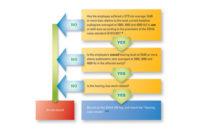
Here are some tips on how to “motivate to prevent” noise-induced hearing loss (NIHL), based on our experience training and working to motivate thousands of employees in companies around the world.
1) Make it personal
Make each employee responsible. Empower them to believe that they have to be a safe person today – and the next.
What do people say when they come out of the audiometric test booth? “How’d I do?” They want to know how well they performed on their annual audiogram. Well, that’s a teachable moment. Safety managers can work with their audiometric service provider to educate the employee on the results of their audiogram, and on how to wear their protection properly.
NIOSH has a free fact sheet titled “Inquiring Ears Want to Know” (http://bit.ly/abIeGF). It explains how to read an audiogram, how to wear hearing protection, and what causes hearing loss. When an employee exits the booth and asks how he/she did, the technician is likely going to give him a lot of information in those few minutes before he goes back to work. To the worker, this deluge of information may seem as if they are drinking from the fire hose. Having such a fact sheet to take with them to share with their family and explain what an audiogram is about can be helpful.
Another way to make it personal is to incorporate earplug fit-testing to measure the “Personal Attenuation Rating” (PAR) for individuals. Fit-testing for hearing protection is a new technology in the fit-testing of personal protective equipment (PPE), similar to respirator fit-testing. Ear plug fit-testing provides the user with immediate feedback as to whether they are properly wearing a given hearing protector and that it offers appropriate protection for their noise exposure.
2) Share the experience
Ludwig van Beethoven said, “Forgive me when you see me draw back when I would have gladly mingled with you. My misfortune is doubly painful to me because I am bound to be misunderstood; for me there can be no relaxation with my fellow men, no refined conversations, no mutual exchange of ideas. I must live almost alone, like one who has been banished; I can mix with society only as much as true necessity demands. If I approach near to people a hot terror seizes upon me, and I fear being exposed to the danger that my condition might be noticed.”
Like Beethoven, people with hearing loss often feel isolated from the world and are reluctant to share their stories about the personal effects of hearing loss. Many see hearing loss as a sign of personal weakness.
However, employees who openly talk about their own hearing loss can send one of the most powerful messages to those with normal hearing. They can speak from personal experience of what it’s like to have diminished hearing.
Posters available at HearForever. org can help share the experience of hearing loss prevention. What does losing one’s hearing feel like? The “Lonely Chair” poster introduces the idea of isolation from the world and missing out on things due to hearing loss. (http://www.hearforever.org/tools-toeducate/educate-what-doeslosing- your-hearing-feel-like)
3) Put a value on hearing
We all tend to take hearing for granted. Our hearing is “on” 24/7. It is the sense that alerts us to danger.
On the National Hearing Conservation Association (NHCA) web site (www.hearingconservation. org), there’s an ongoing collection of favorite sounds. Visitors can submit their favorite sound and read what other people have entered (http://bit. ly/92Cjs0). While many responses are from nature - water running in a brook, ocean sounds, rainfall on a roof, or the wind blowing through the trees - some are things like “My Harley.” Ask employees: “What’s your favorite sound?”
Another free poster on HearForever. org shows a worker with a nametag that says “I Refuse.” (http://www.hearforever. org/tools-to-educate/educate-i-refuseto- let-change-my-retirement) He’s wearing an in-ear dosimeter to monitor his personal protected exposure level and says, “I refuse to change my retirement plans because of bad work habits.”
4) Demonstrate future risks
Demonstrating the future risks of noise-induced hearing loss is especially important for younger workers. The NIOSH Hearing Loss Simulator (http://bit.ly/9PQRJf) is a free program that allows demonstrations of speech and other sounds with varying degrees of hearing loss. The program is fully customizable so that you can input any signal or noise and see the effects of hearing loss.
Posters can also motivate younger populations. Share quotes from rock stars or other celebrities about hearing loss. Pete Townshend of The Who now says, “I have unwittingly helped to invent and refine a type of music that makes its principal components deaf. Hearing loss is a terrible thing because it cannot be repaired.”
The National Institute on Deafness and Other Communication Disorders (NIDCD) recently launched its “It’s a Noisy Planet” campaign, designed to increase awareness about hearing loss and hearing conservation amongst school-aged children and their families. Its web site - www.noisyplanet.nidcd.nig.gov - provides educational guides and materials for parents and educators to promote hearing conservation at home.
NASA has some very cool educational resources and training tools to download free at http://adl.grc.nasa.gov/. The “Animated Auditory Demonstrations II: Challenges to Speech Communication and Music Listening” is a collection of animated auditory demonstrations that show the impact of five years of unprotected exposure, 10 years, 15 years, 20 years, 25 years and then goes back to normal. This tool demonstrates the value for people with normal hearing today to experience a future with the risk of hearing loss – if they don’t protect themselves.
5) Remove the barriers
If hearing protection is not convenient, workers won’t use it. Do everything to remove those barriers. For example: For workers who travel, make ear plugs and ear muffs available in the vehicle - but also provide corded ear plugs, banded hearing protection or multiple-position ear muffs that can be worn around the neck - so they’re handy all the time.
Some employees may need two different kinds of protection for different environments. They might spend short periods of time in a very loud noise environment, but the remainder in low levels of noise. They require a different ear plugs for each situation. Fit-testing systems can help determine which protectors are needed when – and provide them with the skills they need to fit them correctly to obtain enough attenuation (protection).
6) Include workers in the process
No two ears are alike. Involve workers in the process of selecting the right hearing protection. Sample many different types and styles and ask a group of workers to try them and provide feedback about comfort, ease of fit, etc.
Ear plug fit-testing can also aid earplug selection. A fittest will indicate what kind of hearing protection works for a worker. For example, knowing that 40% of workers use a large foam ear plug, 30% use a small foam ear plug, 20% use a large multiple-use ear plug, 5% use a different multiple- use earplug, and 5% use ear muffs, can help manage the logistical issue of keeping enough of each type in stock.
Fit testing can also identify the small number of employees who can’t use any of the “stock” earplugs and may require a small inventory of the hearing protector that works best for them.
7) Repeat and remind: painless but permanent
The “Damaged Ear” posted on HearForever.org (http://www.hearforever.org/tools-toeducate/educate-damaged) shows a damaged versus a healthy ear. The point that’s driven home is that no one can “see” hearing damage from the outside. And there’s no way to predict who will get noise-induced hearing loss and who won’t.
Workers don’t often know when they’re starting to get hearing loss. It’s painless. It’s usually progressive over a fairly long period of time. The damage is subtle and adds up over months or years before it really develops into something noticeable.
The bad news is that hearing loss, once it occurs, is permanent. But the good news is that it’s very preventable if employers and employees move beyond training and mere compliance to motivate workers to prevent noise-induced hearing loss.


